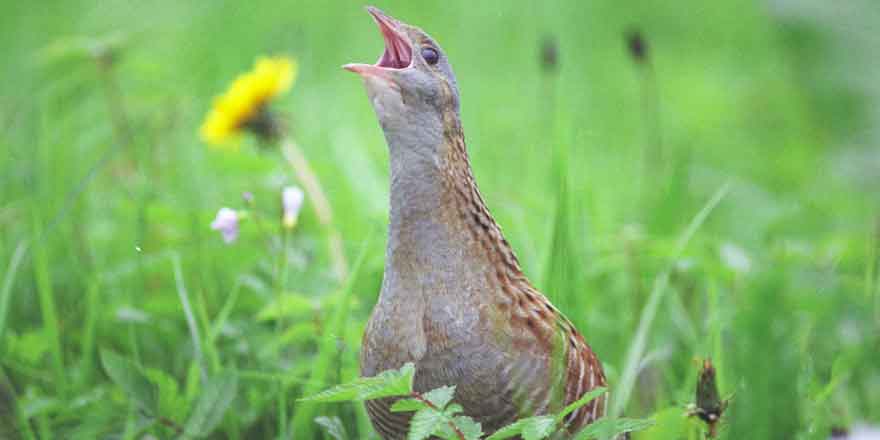
Birds of Clare Island: Corncrake
16 August 2020On Day 2 of Heritage Week we learn about this former inhabitant of Clare Island featuring in New Survey of Clare Island, vol. 9: Birds.
The ninth volume in the New Survey of Clare Island series focuses on the birds of Clare Island and is being released on 17 August as part of Heritage Week. Join us during Heritage Week and learn about some of the many birds that populate the island.
Today, you can read the entry on the Corncrake as it appears in Chapter Two of New Survey of Clare Island, vol. 9: Birds. Chapter Two contains an inventory of the birds of Clare Island, and this is compared with the findings of the first survey conducted during 1909–11. The list comprises records that span the period from 1887 to 2018.
Corncrake Crex crex (Linnaeus)
Migrant; formerly bred but now apparently extinct on Clare Island; still a rare vagrant.
Although a corncrake was seen in 2004, this migrant species is now apparently extinct as a breeding species on Clare Island (Winters 2006). It was ‘very common’ at one time (Ussher 1912), but the corncrake underwent a major decline in Mayo—particularly between 1988 and 1993— as detailed in Ruttledge’s (1994 and references therein) comprehensive review. The corncrake was found to be breeding in the 1968 to 1972 atlas survey (Sharrock 1976) but was not noted by Lloyd (1984) who thought that it had been ‘lost’ since 1945; Sharrock (1976) was not cited. The corncrake was not found during the 1988–91 atlas survey (Gibbons et al. 1993) nor during that of 2007–11 (Balmer et al. 2013), although one was heard on Clare Island in June 2017 (PW).
Interestingly, it appears that the corncrake remained breeding on Inishbofin (c. 25 km southwest of Clare Island) for considerably longer, and in larger numbers, than it did on Clare Island, despite the population collapse in County Galway being much steeper than that in Mayo (Ruttledge 1994).
Image credits: R.T. Mills
About the book:
Explore Clare Island’s avifauna, including the seabirds, land birds and waterbirds, and investigate the curious absence of breeding rooks from the island. This volume features a systematic list comprised of records of bird sightings that stretch from 1887 to 2018. The result of almost 20 years of fieldwork, it is an invaluable source for future monitoring of birds on Clare Island and beyond.
The first Clare Island Survey of 1909–11 was the most ambitious natural history project ever undertaken in Ireland and the first major biological survey of a specific area carried out in the world. The ‘Birds’ paper included in that survey was written by Richard J. Ussher and was based on fieldwork conducted on the island between 1909 and 1911. Ussher’s ‘Aves’ paper, however, also summarised details of the avifauna of a wider area in the west of Ireland—mainly the Counties of Galway and Mayo—a theme that was revisited several times by the late Major Robert F. Ruttledge. The current ‘Birds’ volume focuses exclusively on Clare Island and applies modern methods of census.
Buy the book here.
About the project:
The New Survey of Clare Island is a unique multidisciplinary project, the overall aim being to assess the environmental changes that have taken place over the last hundred years on Clare Island. Together with Robert Lloyd Praeger’s first Clare Island Survey, the New Survey provides an invaluable body of research informing future conservation of natural and built heritage of Ireland and Europe.



